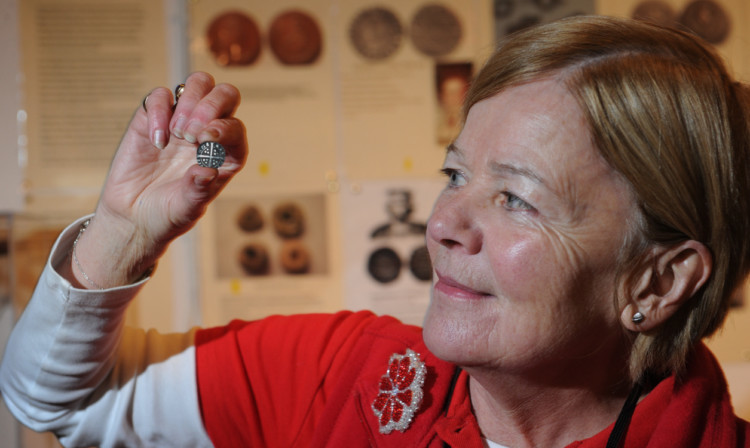A coin has been uncovered in the Mearns which may have been carried by one of King Edward’s army during the Scottish Wars of Independence.
Former Stonehaven man Keith Knight, who has been metal detecting for more than 20 years, recently found his oldest coin to date in fields close to the harbour.
The coin was a long cross silver penny of the reign of Edward I, king of England (1272-1307), which was minted in Bristol during the period of 1272-1304.
Many of Mr Knight’s finds, including his latest penny, are on show at the Tolbooth Museum in Stonehaven.
A museum spokesman said: “Edward I, king of England from 1272 to 1307 and nicknamed Hammer of the Scots and Edward Longshanks, campaigned in Scotland in the 1290s to capture William Wallace and get control over Scotland.
“He is known to have invaded Scotland with an army of around 40-60,000 men, and allegedly crossed the Causy Mounth road and camped at Durris Castle and at Kincardine O’Neil.
“It is possible that this particular coin may have been carried by one of Edward’s soldiers.
“Keith has also found a similar Edward I long cross penny in the Banchory area, which further suggests that Edward’s army reached the north-east of Scotland.”
The long cross silver penny was known as such because the cross went the full diameter of the coin. This was done so clipping was prevented or reduced to a minimum.
People could be hanged if they were caught taking chunks out of the king’s coins.
Mr Knight, who now lives in Banchory, has found other coins in the same fields around Stonehaven, including an Elizabeth I silver sixpence dated 1597, a James VI silver groat dated 1605 and many Charles I and II copper coins, including Turners and Bodles (half groats), and also Cartwheel two and one penny pieces dated 1795.
He has also found many personal items such as Dandy Buttons, thimbles, and Georgian and Victorian costume jewellery.
The coin finds have been registered with Treasure Trove Scotland and assessed by archaeologist Natasha Ferguson.
Mr Knight also has a possible bronze spear head or sword fragment found in the same fields around Stonehaven.
It is believed to be more than 1,500 years old, and is being assessed by Treasure Trove Scotland.
Over the years, Mr Knight has detected all over the UK with finds as early as Roman coins and brooches from the 1st and 2nd Century AD. The Tolbooth Museum is now on its winter hours, opening only on Saturday and Sunday afternoons until the beginning of April.
